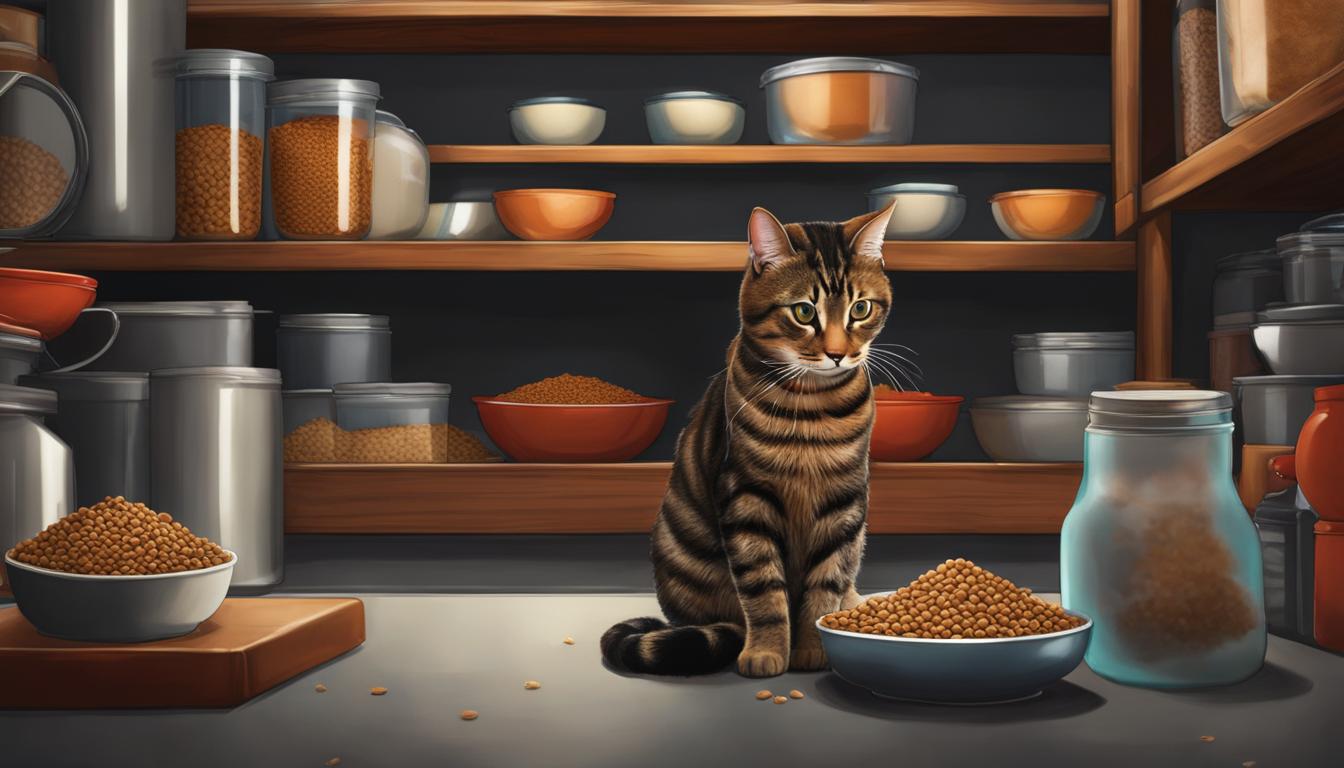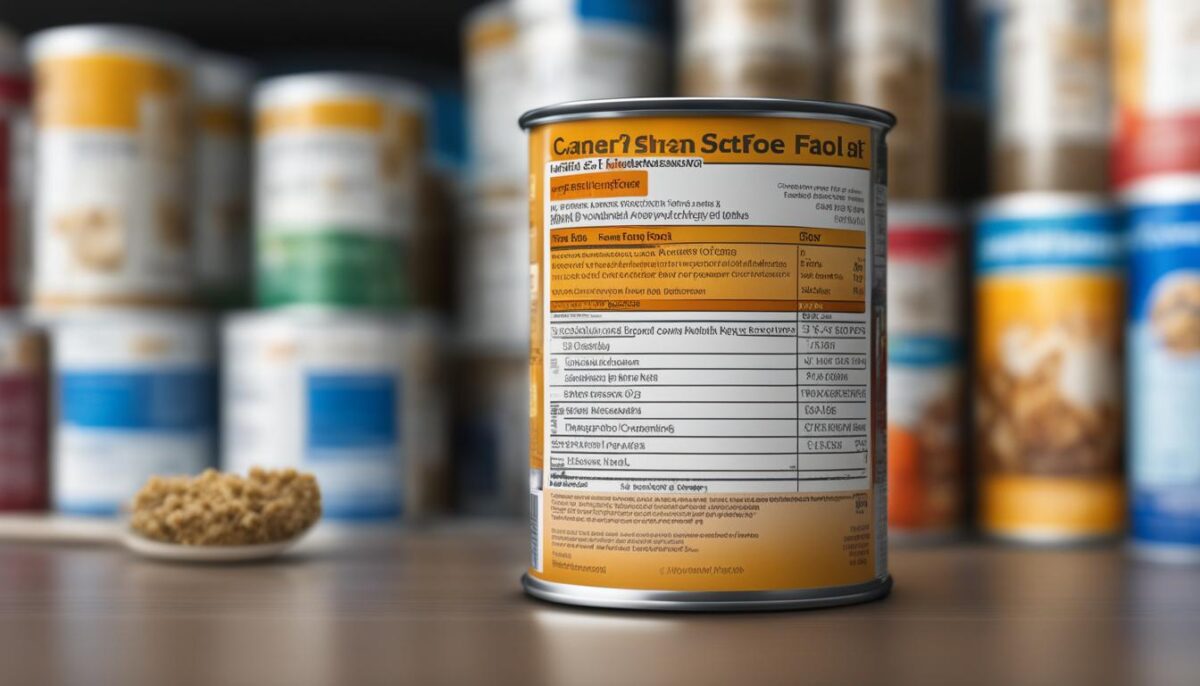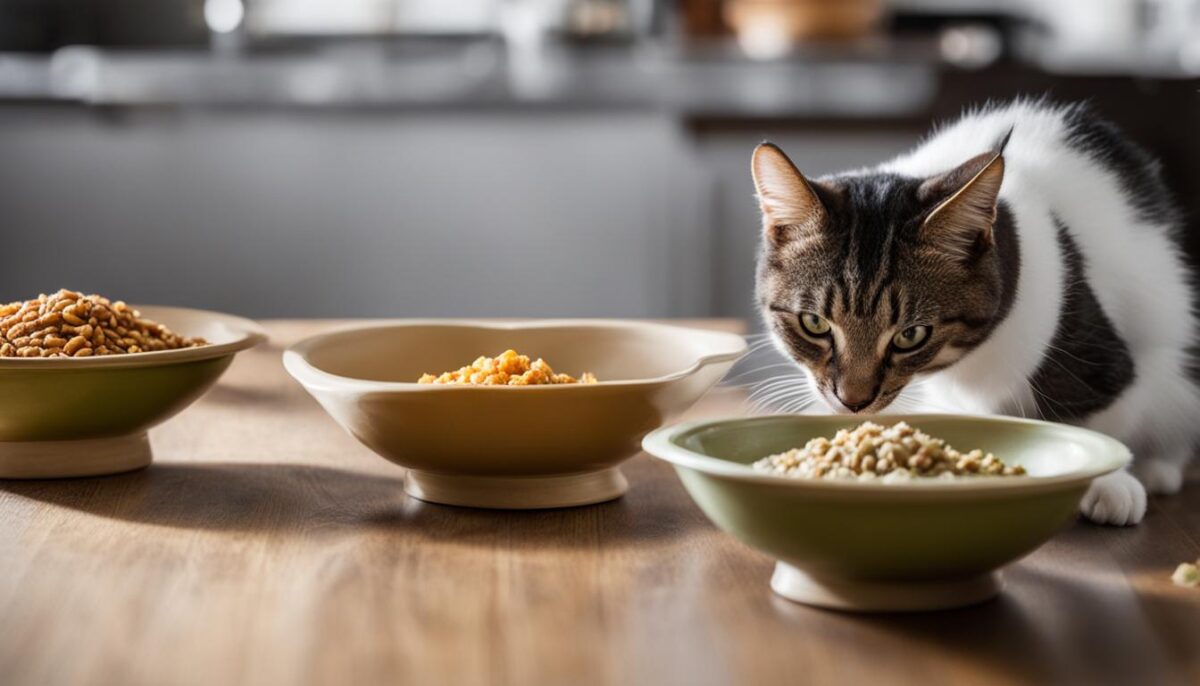When your furry buddy needs a cat diet change, you’ve got to take things slow. Maybe your kitten is now a grown-up cat, or your older cat needs something special for their older years. And for those cats who need to watch their weight or have a picky tummy, finding just the right food is super important. Changing your cat’s food shouldn’t be a race—give it about a week or so. This helps your cat’s tummy adjust and lets them learn to love the new flavor!
Getting to know about feline nutrition is key, and so is learning how to introduce new cat food the right way. Your cat has cat dietary needs that are important. We’ll go through the steps to keep your cat’s meal times happy and healthy. Ready? Let’s go!
Key Takeaways
- Patience is key when introducing a new diet.
- Your cat’s age matters for their food change.
- Remember to consider if your cat spends time indoors or outdoors.
- Monitor your cat’s health while changing diets.
- When in doubt, a vet can help with food troubles.
Understanding the Need for Diet Change in Cats
As your cat grows and goes through life, just like people, it needs different types of food. These changes help your cat stay happy and healthy. Let’s look at why and when to switch up your kitty’s meals.
Recognizing the Signs of Needed Change Based on Age
Have you noticed your kitten is getting bigger? Young cats need lots of food to help them grow. But once they’re all grown up, they don’t need to eat quite as much. Cats who are seven or older are kind of like grandmas and grandpas. They sometimes need special food to help with their joints so they can move easily and feel good.
Adjusting Cat Food for Ideal Body Condition and Weight
Some cats can be a little too chunky, and some might be too thin. You want your cat to be just the right weight, not too heavy and not too light. It’s important for your cat to have food that helps it stay at an optimal cat weight.
Health Conditions Prompting New Dietary Needs
Cats can have cat health issues too. Just like us, they sometimes need special food to help them feel better. If your cat has a sore tummy or itchy skin, the vet might suggest a special kind of food that’s gentle and helps them heal.
Considerations for Indoor Versus Outdoor Cats
Your cat might spend all day indoors or it might like to run around outside. Indoor cats don’t get as much exercise, so they don’t need to eat as much as outdoor cats. Also, because they’re inside, they might get more hairballs. That means they might need food that helps with that, too.
Understanding your cat’s needs is a big part of taking care of your furry friend. You want to make sure it eats what is best for its age, size, and whether it likes to laze around the house or go on outdoor adventures.
Remember, each cat is special, and their food should be special too. Your cat’s happy purring and cuddles will let you know that you’re making the right choices for its diet!
Introducing a New Diet to Your Cat
When it’s time for switching cat food, you should know it’s a bit like stepping onto a dance floor. It’s all about the smooth moves and the right pace. Let’s walk through how to glide through the feline diet transitioning without missing a beat. Imagine your kitty’s current meal is a familiar song. Adding a bit of new chow is like adding a fresh tune to the mix.
You start by mixing three parts of their old grub with one part of the shiny new kibble. This is your first dance step. Your cat will begin nibbling on the new cat diet introduction but still have the comfort of their old favorites. As days pass, you’ll shift the balance – like finding the rhythm, until it’s a perfect half-and-half. And then, before you know it, the new chow takes the spotlight, and your cat is dining on a completely new melody of flavors and nutrients.
- Day 1-3: Mix 3/4 old food with 1/4 new food
- Day 4-6: Mix old food and new food in equal parts
- Day 7-10: Mix 1/4 old food with 3/4 new food
- Day 10+: Serve only the new food
But remember, not all furry friends swing to the new rhythm right away. Some might need a gentler approach or a slower tune. If you notice their tummy is a little off or they’re turning up their nose, it’s okay to slow down the steps. Maybe try the old song for a bit longer with just a hint of the new one. Your vet is like the dance instructor here, ready to guide you when you’re unsure of the next step in this new cat diet introduction.
So, take it slow, keep it groovy, and watch your kitty step into a healthier beat with their new diet!
Selecting the Right Food: Ingredients, Analysis, and Texture
When you’re choosing new cat food ingredients, you want to pick flavors that your cat licks their whiskers for. Just like how you might love the taste of apples or pizza, cats get excited about certain flavors too!
Comparing the Main Ingredients for Familiar Flavors
What’s your cat’s favorite food that they’ve been munching on? Check the cat food ingredients listed on their current food bag. Look for those same yummy meats and other ingredients when picking their new food. If they’ve been enjoying chicken, find a food that has chicken as the first ingredient!
Understanding the Guaranteed Analysis on Cat Food Labels
Think of the cat nutrition label reading as a mini report card for the food. It shows how much protein, fat, and other important stuff is in there. You want these numbers to look like those on their old food label, so your kitty still gets all the nutrients they need.
Respecting Your Cat’s Preferences for Specific Food Textures
Cats can be quite picky when it comes to the feel of their food. Some love smooth, pate-like textures and some go wild for the chunky bits. Pay attention to what your cat usually likes. Is their favorite food wet and soft, or is it more like a kibble party in their bowl? Keep this in mind while choosing to make sure they’re happy!
| Texture Type | Why Cats Love It | Examples |
|---|---|---|
| Pate (Smooth) | Easy to lick and often rich in flavor | Classic Chicken Feast, Seafood Medley |
| Chunks in Gravy (Chunky) | Lots of tasty sauce and fun pieces to chew | Savory Salmon Chunks, Beefy Bites |
| Kibble (Crunchy) | Fun to crunch and good for teeth | Crunchy Delight, Seafood Morsels |
Remember, whatever food you choose, make sure it makes your cat purr with delight and is full of the good stuff to keep them healthy and playful!
Transitioning Your Feline Friend: A Step-By-Step Process
Is it time to try some new chow for your kitty? A cat diet transition guide might be just what you need. Let’s take a look at a step-by-step cat food change to make this move smooth for your furball. Changing food can upset your cat’s tummy, so we do this one small step at a time.
Start with what your kitty loves – their current food. Slowly mix in the new food with their old food. Each day, add just a bit more of the new food and a bit less of the old until it’s all new. This is kind of like when you try out a new ice cream flavor by adding a spoon of it on top of your usual one!
- Mix 75% of their old food with 25% new food.
- After a few days, make it half old food and half new food.
- Then, switch to 25% old food and 75% new food.
- Last, go to 100% new food – party time for your kitty!
Remember, if your kitty is a picky eater or seems queasy, slow it down. They need to eat every day to stay strong. Watch your kitty’s belly, and if they are not their happy, playful self, it’s time to chat with the vet. They’ll help you make mealtime yum and fun again!
Conclusion
Switching your cat’s food is a big step, and doing it right means taking your time. You’ve learned that being patient is key to a smooth cat diet transition. It’s kind of like trying new foods yourself; sometimes it takes a bit to get used to them. Keep an eye on your furry buddy during the change. You want to see that they are happy with their new food and not having any tummy issues. If anything seems off, slow down the switch to make it easier for them.
Importance of Patience and Observation During Transition
Your cat’s health means a lot, and watching over them during their diet change shows that you care. If you see they are not eating or start to feel sick, it might mean the new food isn’t working out as quickly as hoped. Trust what you see and feel free to take small steps. Remember, every cat is different and what works for one might not work for another. Your cat will let you know if the pace is just right.
When to Consult with Your Veterinarian
Sometimes you need a little help, and when it comes to your cat’s feeding, a veterinary consultation for cat feeding is a smart choice. Vets have lots of know-how about cats and their food needs. They can guide you in a way that’s best for your pet. If your cat stops eating or shows signs of feeling bad often, it’s time for a vet visit. They can support you in figuring out the best plan to make sure your cat’s new diet is a success.
FAQ
At what age should I switch my kitten to adult cat food?
Kittens usually transition to adult cat food around one year old, though some may require a diet change earlier or later depending on growth and health.
How can I tell if my cat needs a special diet for their age?
Cats over seven years old may benefit from senior cat food designed to support joint health and overall wellbeing. Look for signs like decreased activity levels that could indicate it’s time for a diet change.
What should I do if my cat needs to gain or lose weight?
For an **optimal cat weight**, work with your vet to find a diet plan—be it more food, less food, or a special formula—that helps your cat achieve a healthier weight.
Why might my indoor cat need different food than an outdoor cat?
Indoor cats tend to be less active and prone to hairballs due to frequent grooming. They may benefit from food tailored to these needs, which can be different from the nutritional needs of more active, outdoor cats.
How do I introduce a new diet to my cat?
Introduce a new diet gradually, mixing the new food with the old one, and over the course of 7-10 days, increase the proportion of the new food. If you notice any dietary sensitivity, slow the process down and consult your vet.
What should I look for when choosing a new cat food?
Look for familiar flavors by checking the **cat food ingredients** list for proteins your cat enjoys, as well as a **guaranteed analysis** on the label that shows a similar protein and fat content to their current diet. Don’t forget to consider the texture your cat prefers, which can range from smooth pate to chunky bits.
Can you break down the steps to transitioning my cat to new food?
Start with 3/4 of their current food mixed with 1/4 of the new food and daily adjust the ratios until you’re only feeding the new food by day 7-10. Monitor your cat’s response and if necessary, extend this period to suit their comfort.
Why is patience important when changing my cat’s diet?
Cats’ digestive systems can be sensitive to changes. Taking your time allows your cat to adjust without unnecessary stress or tummy trouble, ensuring a successful transition.
What are some signs that I should consult my veterinarian during a diet change?
Consult your veterinarian if you notice signs of discomfort, refusal to eat, digestive upsets, or if your cat isn’t transitioning well to the new diet. They can offer professional guidance tailored to your cat’s specific health needs.


